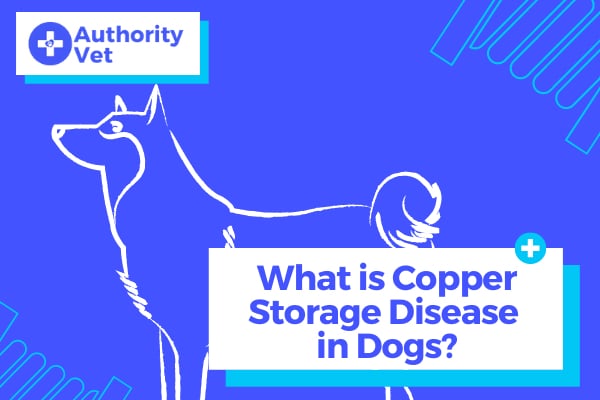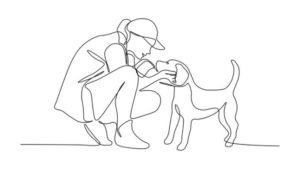Copper storage disease is a condition caused by excessive accumulation of Copper in a dogs’ liver. This leads to cirrhosis (scarring and deterioration) of the liver. Copper storage disease is often secondary to a primary disease, such as a genetic abnormal copper metabolism.
Dogs that are susceptible to Copper Storage Disease include Dobermans, West Highland Terriers, Bedlington Terriers, Skye Terriers, and Labrador Retrievers. While female dogs have a higher prevalence of developing Copper storage disease, male dogs are also prone to this condition.
It is important to note that dogs can be affected by copper storage disease at any time in their life.

There are three types of primary copper storage diseases in dogs:
Secondary copper storage diseases cause progressive liver disease symptoms due to cirrhosis of the liver and chronic hepatitis.
Copper storage disease occurs when an excess of Copper accumulates in the liver. Dogs with copper storage disease are unable to excrete excess Copper from their liver into the bile, which causes copper build-up within the liver, Copper is generally absorbed from your dogs’ diet by the small intestines, which is then carried to the liver to be metabolized.
There are several contributing genetic factors of copper storage disease in different dog breeds:
Both primary and secondary copper storage disease may cause both acute and chronic symptoms:
Acute:
Chronic:
To diagnose copper storage disease, your Veterinarian will complete a series of blood work, a complete blood count and a chemistry blood panel, as well as a urinalysis. A thorough history of your dogs’ symptoms will be beneficial in determining if the condition is primary or secondary in its development. Depending on if your dogs’ blood work is indicative of copper storage disease, they may need to have a biopsy of their liver and an abdominal ultrasound to determine its integrity and health.
Treatment options will be dependent on the type of copper storage disease and whether it is acute or chronic and may require inpatient care depending on your dogs’ symptoms and condition.
Changing your dogs’ food to a low copper diet is an effective method for treating most copper storage diseases. Low copper dog food can be difficult to find commercially, so consult with your Veterinarian about selecting the right diet for your dog. Avoid giving your dogs copper-containing mineral supplements as these may exacerbate copper storage disease. Your Veterinarian may also prescribe drugs (penicillamine) and other nutritional supplements (zinc) to help eliminate excess Copper in the body.
Acute liver failure will be treated supportively with intravenous fluids to help rid the body of the excess Copper and toxins. A blood transfusion may also be necessary if your dog has high levels of red blood cell breakdown with copper-induced anemia. With any acute liver failure, it is vital that supportive care be initiated as soon as possible.
Following a copper storage disease diagnosis, blood work will need to be completed every 4-6 months to monitor your dogs’ zinc levels, if on a zinc supplement, and liver enzymes. Your dogs’ body weight will be monitored by your Veterinarian to ensure they are not losing an excessive amount of weight. Generally, a liver biopsy does not need to be repeated to monitor treatment efficacy.
While copper storage disease cannot be prevented without genetic testing, full recovery from copper storage disease is rare, supportive care and dietary changes will drastically improve their quality of life.
Dogs with severe cases of copper storage disease may need medication for the remainder of their life. Returning to your Vet for routine lab work and supportive care will ensure your dog lives a long and happy life.

Nicole is a Licensed and Registered Veterinary Technician in Washington and California. She is the immediate past president of the Washington State Association of Veterinary Technicians and holds multiple advanced degrees in veterinary technology, psychology, and human health care management. She has worked in private and corporate settings. Nicole manages an ambulatory surgery practice based in the Puget Sound area of Washington. When not working in the clinic, Nicole is a frequent lecturer at various national and international conferences and meetings. She is also a tireless advocate for the appropriate use of regenerative therapies in veterinary medicine.
